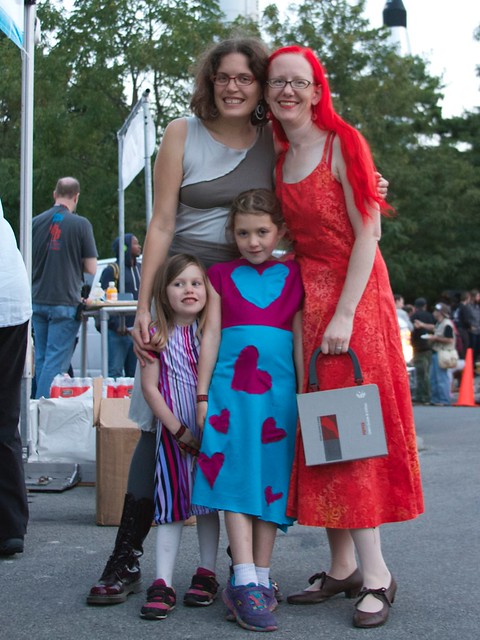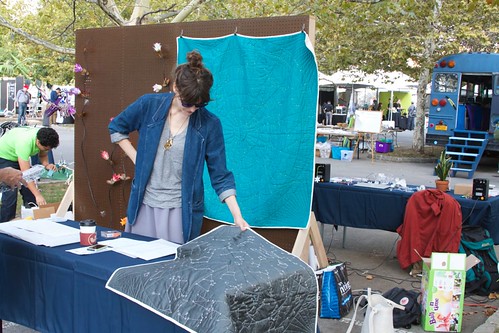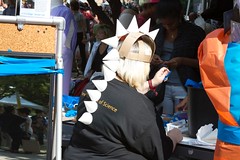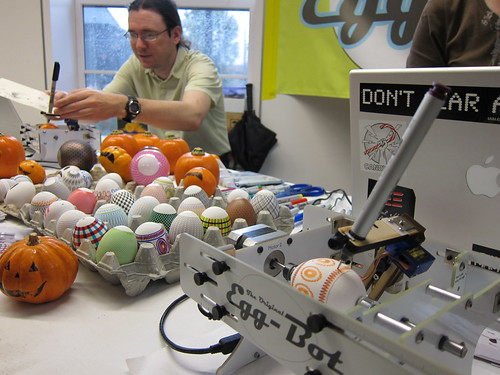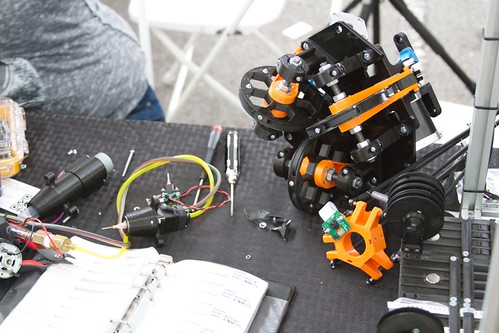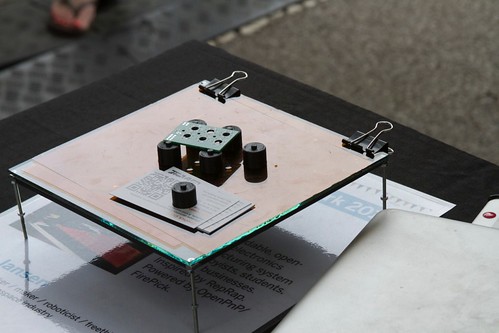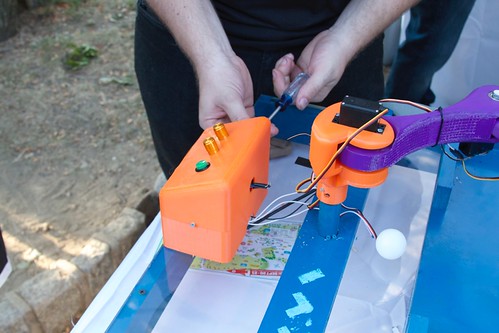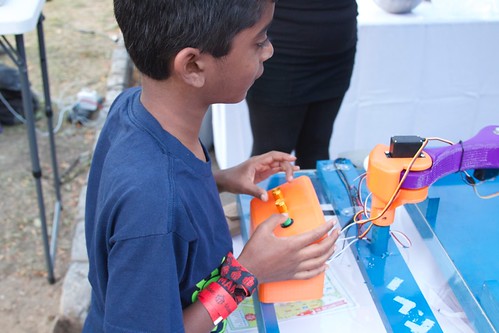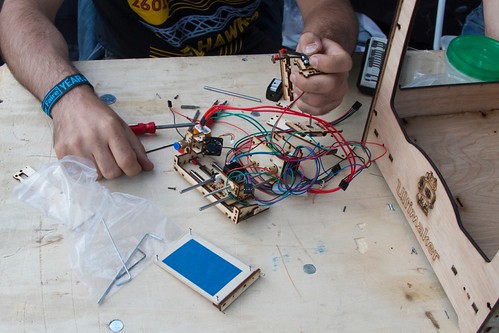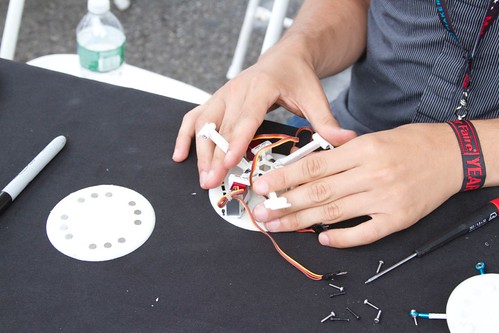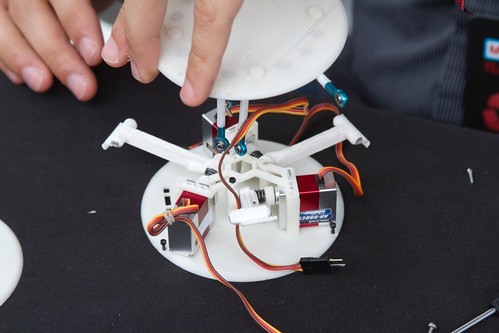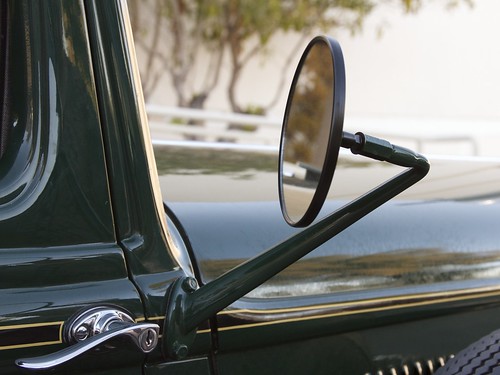We’ve talked previously about making simple LED pumpkins with candle flicker LEDs. Lately we’ve been playing with making better looking flames by using multiple independent flickering LEDs with different colors and lens styles. It makes a spectacular difference: it goes from something that looks like, well, a flickering LED to something that really looks like there might be a flame in there.

The end result is pretty neat: A compact battery powered “flameless flame” that looks great in a pumpkin, luminaria, or as a stage prop. The interplay of the different LED types and colors gives an ever-changing and shifting flame display.
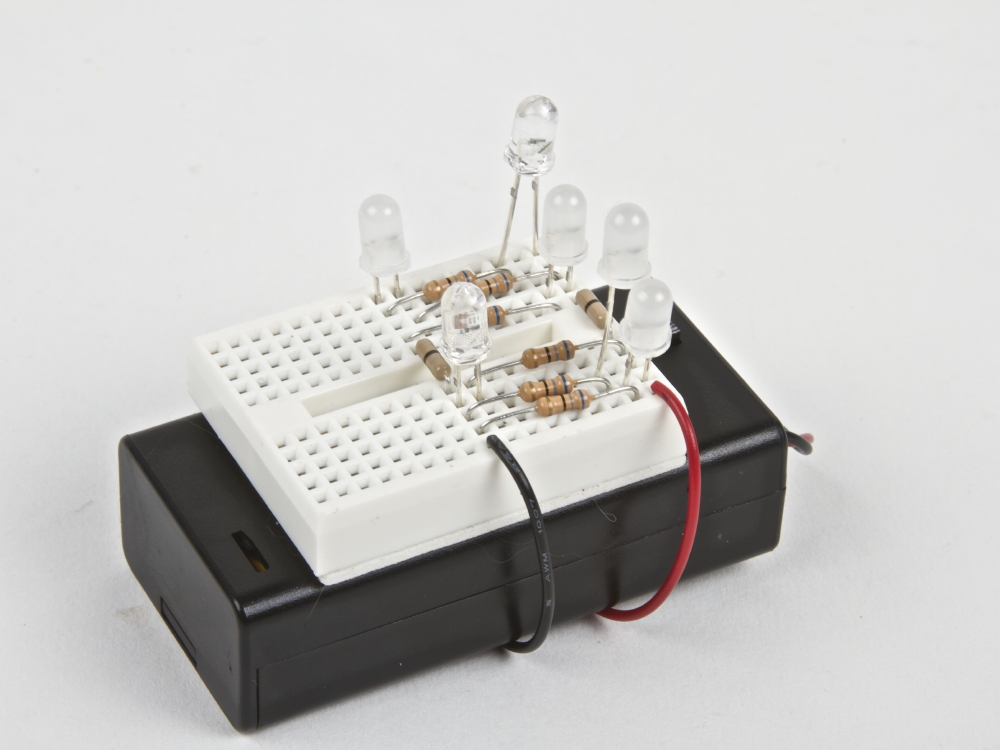
Other than the candle flickering LEDs, the parts are commonly available. We’ve also bundled them together in the Solderless Flickery Flame Kit.
Components:
- Battery Holder (2×AA with switch)
- Mini-breadboard
- 6 × candle flicker LEDs (2 red diffused, 2 yellow diffused, and 2 yellow clear lens)
- 6 × 68 ohm resistor
- 2 × wire jumper
- White paper bag (optional)
Also needed:
- 2 × AA Batteries (not optional)
- Wire clippers, cutting pliers, or “beater” scissors (optional)
Hook up the battery holder to the breadboard several rows apart to give enough room to install the resistors and LEDs. Optional: peel off the backing on breadboard and adhere it to the battery holder. Connect each LED with its own 68 ohm resistor. (Use the “in parallel” method from this article.) The extra jumpers are included to help bridge across the center gap in the breadboard.
Trimming the resistor leads will keep the breadboard tidy, and help prevent short circuits. Trimming the LED leads to varying heights will help distribute the light in different ways.

The white paper bag included with the kit can be used for creating a traditional luminaria or for making a ghostly halloween decoration.

You can find more Halloween decor projects in our Halloween Project Archive.




